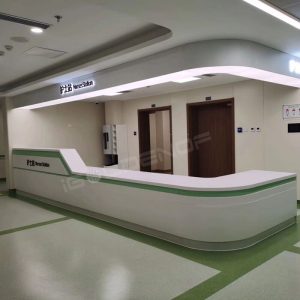People often say “old child”, from the point of view of psychology, the old man is an adult with “childlike innocence”. Therefore, in the design of medical furniture, we should not only take into account the physiological and psychological needs of the elderly, but also deliberately show the so-called “humanization”, which is contrary to the patient’s self-consciousness of insisting on “I can”, and more likely to stimulate the patient’s sense of rejection and rebellious psychology; On the contrary, it is both practical and acceptable to give thoughtful care without realizing it.

First to the patient, as age increases, the sharpness of the five senses is significantly reduced. Overall, designers need to carefully create light and sound environments that match the patient’s perception. It is an example with light environment, the light feeling that the ability of average adult is acquired in old people’s need in brighter environment feels experience, but cannot accept too strong dazzle lamplight and colour, when this asks furniture is choosing to match color scheme, should notice to adjust saturation and brightness — color wants sweet and pleasant already, want bright and bright eye again. This avoids visual impairments that older people may experience.
Secondly, specific designs should be taken to match the overall environment. For example, when the elderly make squat, arm lifting and other movements that need body coordination, the point of force of hospital furniture is different from that of ordinary adults, and the highest or lowest contact points involved in squatting, sitting and other forms need to be adjusted appropriately under conventional standards. Another example is that in the case of wheelchairs, large rotation space is required to facilitate the free rotation direction of the elderly, thus reducing the obstruction and limited mobility and requiring the help of others.
In terms of the construction of medical and nursing environment, ergonomics is of great significance to deepen the refinement of vertical field. It hides the care for users in the overall environment and details, and fully embodies the humanistic care spirit advocated by the medical community.
